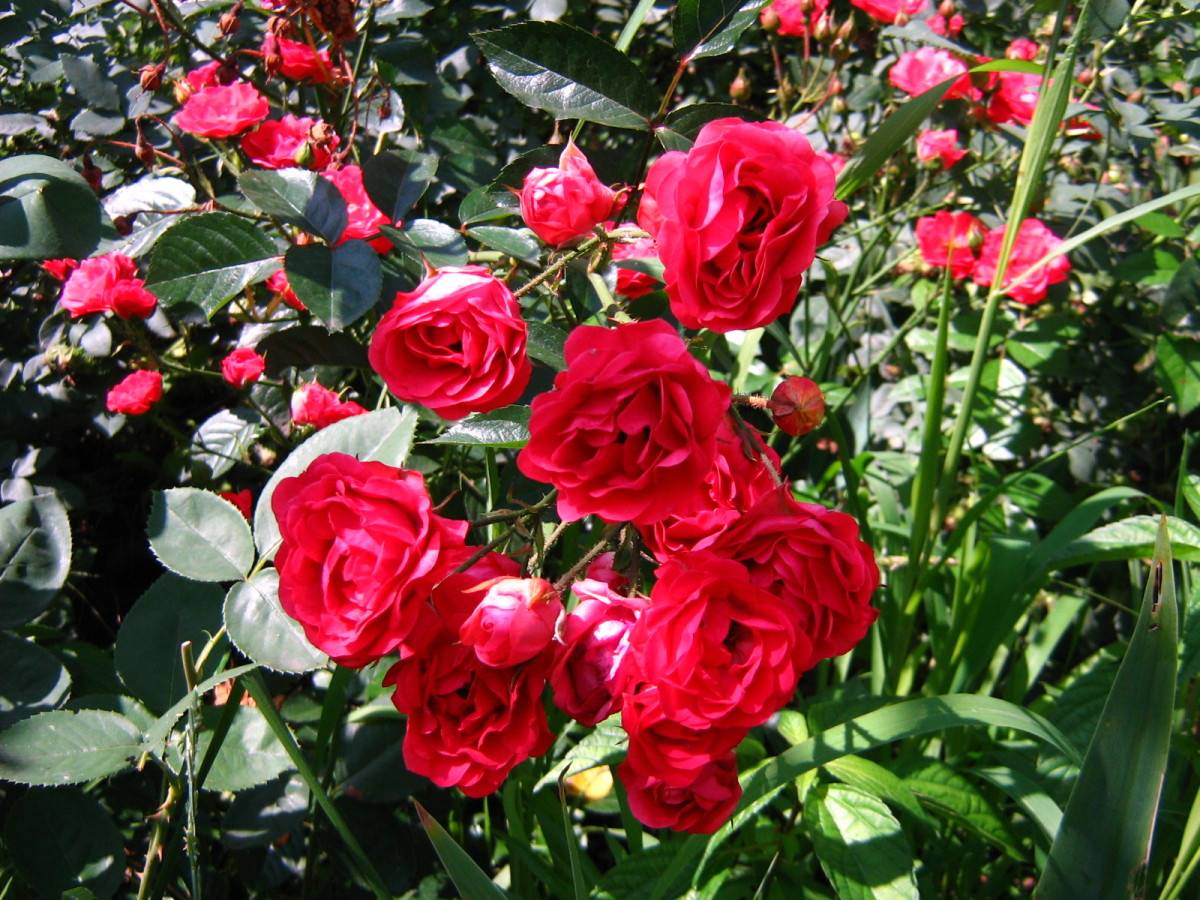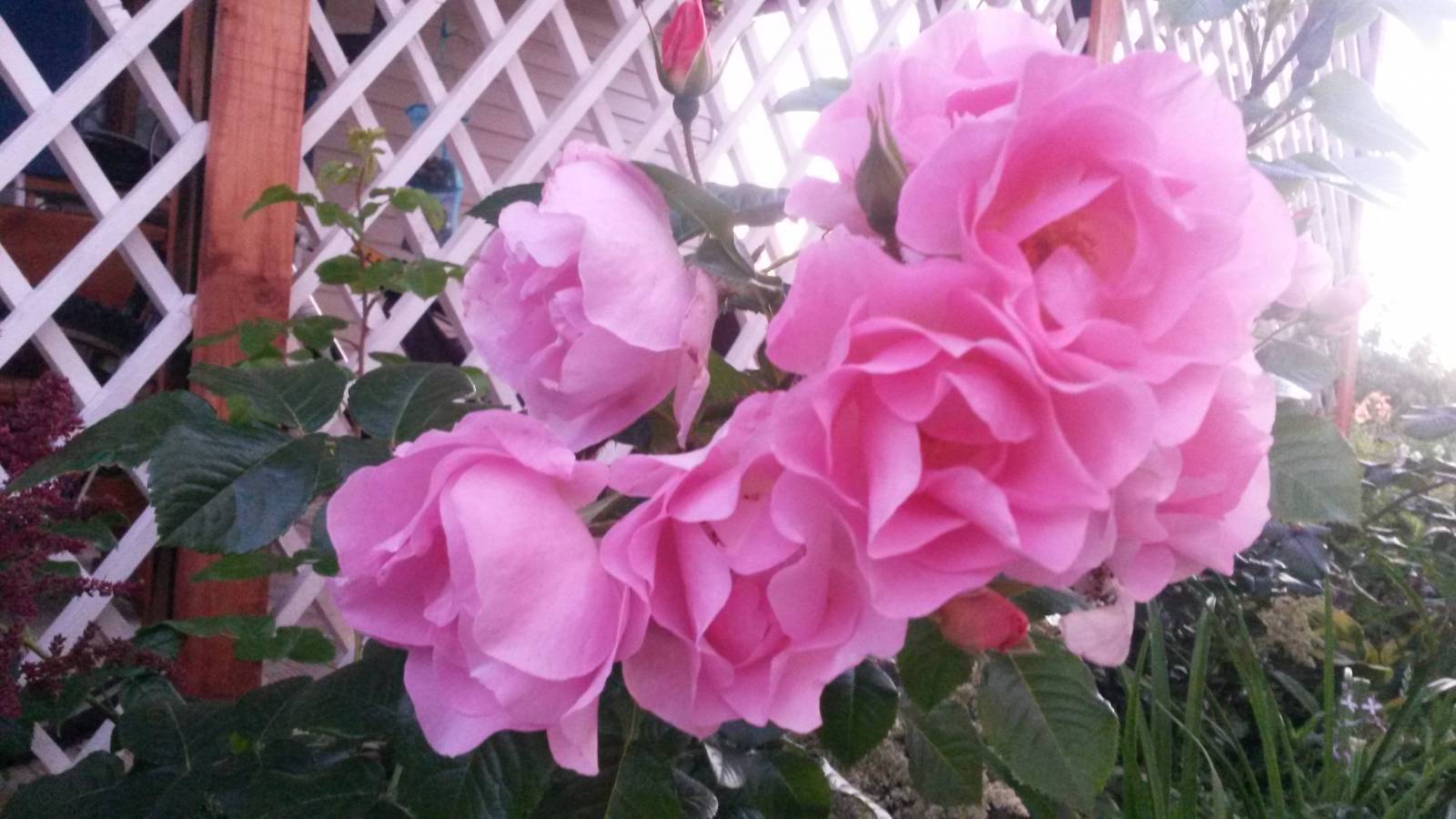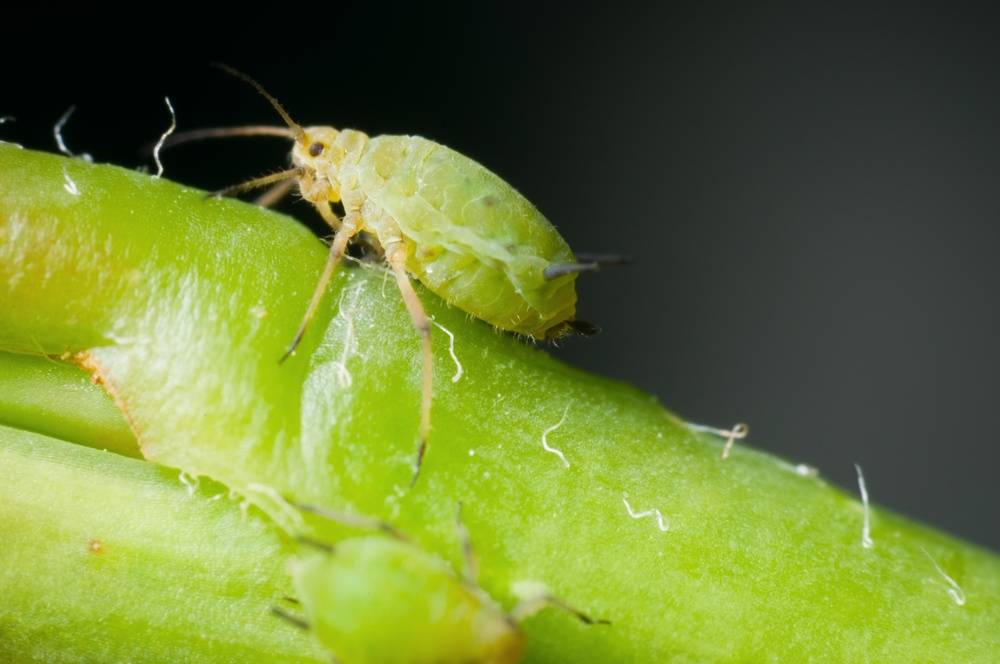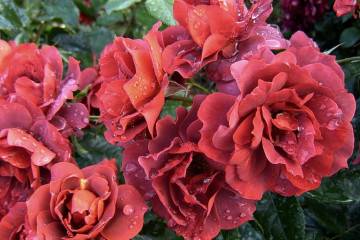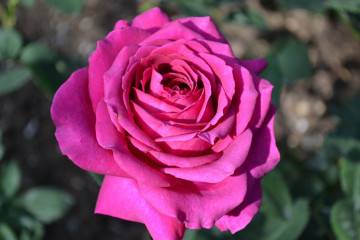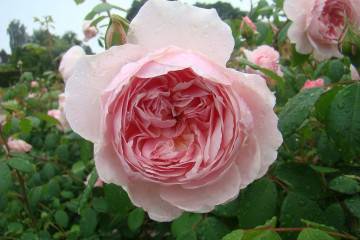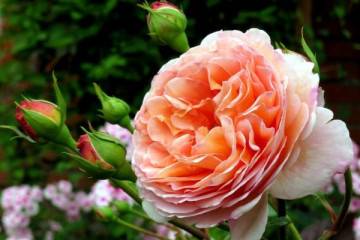Rose Robusta (Robusta) - description of a varietal bush
Content:
Roses are considered one of the main decorations of the garden area. There are many varieties of this flower, but to create a special charm in landscape design, flower growers prefer to choose the brightest varieties. One of them is the Robusta rose. Due to the contrast between dark foliage and bright buds, it looks very unusual.
Park rose Robusta: description, history of creation
Rose Robusta belongs to hybrid plants. It was obtained in a German nursery by the efforts of the Kordes family of breeders. The description of the new species was first presented in 1979.
Robusta is a shrub 1.5 meters high and 1.2 meters in diameter. The main differences between this variety and its counterparts are:
- Large, bright green leaves that frame the flowers of the rose.
- Robusta park rose buds are red or scarlet, with small stamens. Blooming flowers form inflorescences of 5-10 pieces.
- Blooming Robusta begins in mid-spring and ends with the onset of the first cold weather. The buds bloom profusely and continuously. They tolerate bright sunlight and rain well.
Advantages and disadvantages
This culture has no significant disadvantages. Even with minimal maintenance, it will not cause problems in growing. The pluses include the following:
- abundant and continuous flowering;
- can grow in almost any soil;
- calmly tolerates various weather conditions;
- has high frost resistance;
- has immunity to fungal diseases.
Use in landscape design
A garden rose is often used in the formation of landscape design. It is used for the following landscaping options:
- in groups with other plants or single plantings;
- to create green hedges, borders;
- creation of rocky gardens, flower beds.
Growing a flower in the open field
The Scarlet Rose Robusta has a subspecies of Pink Robusta. Its only difference is its larger buds of pale pink color. However, budding growers may find that the rules for caring for these two varieties may differ. In fact, there is no difference in the growing process.
Robusta does not have high requirements for soil quality and planting site. It can grow in both humid and arid climates. But still, for a more lush flowering, it is recommended to choose a sufficiently lit place with a little partial shade. It is advisable to choose a semi-loamy soil or create a substrate yourself from the following components (one part of each):
- turf;
- humus;
- peat;
- leafy land.
Planting seedlings is best done in the spring.
The rose is planted in the following sequence:
- Before planting, the cutting is placed in a growth stimulant solution for several hours.
- A hole is prepared with a depth of 60 cm and 70 cm in diameter.
- A drainage layer is laid out at the bottom of the fossa.
- The seedling is placed in the hole, the roots are covered with earth.
- Mulching and watering are performed around the cutting.
Plant care
Despite the unpretentiousness of Robusta, for its proper growth it is necessary to follow the basic rules for caring for it. Watering the rose should be rare, but abundant. She needs 2 buckets of water about once every 10 days.
Watering should be carried out at the root within a radius of 20 cm from the bush. Do not allow the earthen coma to dry out, therefore, after 5 days, the soil must be loosened.
Top dressing and soil quality
Almost any soil is suitable for growing a rose, but it will feel better in a nutritious substrate. After planting next to the bush, weeding should be done to remove weeds.
Robusta is an unpretentious plant, but fertilization will always benefit her. For this, compost and humus are most often used. You need to feed the bush once at the beginning of summer, combining it with the mulching procedure.
Twice a year, the rose can be fertilized with liquid agents, for example, mullein infusion. One bush requires about 10 liters of solution.
Pruning and replanting
You need to cut the shrub in May, when the first young leaves appear. All frozen, dry and diseased areas are removed. Anti-aging pruning is performed no more than once every 5 years. To do this, at the beginning of autumn, it is necessary to remove all old shoots at the root.
If there is a need to transplant a rose, then this should be done in early spring or late autumn. If you have to perform the procedure at a different time, you will need to help the bush to take root in a new place.
Preparation for wintering
To prepare for winter, the bush is pruned, but not too short, as this can weaken the rose. Robusta also needs to provide shelter. It can be made from polyethylene or other non-woven material.
Blooming rose
The rose begins to bloom in May and throughout the summer, faded buds change to new ones. The most active vegetation occurs from mid-August to early September. If autumn is warm, then flowering can continue until October.
During flowering, the rose needs regular weeding and loosening. The dormant period for the Robusta rose begins in late autumn and ends in mid-spring.
Reasons for the lack of flowering
In some cases, Robusta may not bloom. This is due to the following reasons:
- If the rose did not bloom on the first goal after planting, then there is nothing to worry about. In this case, the bush will root better in a new place.
- With improper care, lack of dressing, or exposure to pests, flowering may not start. Problems should be rectified as soon as possible.
- If the bush is cut too short, then it can throw all its energy into the growth of new branches and the flowering period will shift.
Flower propagation
Rose propagation is recommended from early to mid-summer. Robusta is grown by its own root method. For this, green cuttings are prepared in advance. They are cut into a length of 15-20 cm and placed in a growth stimulant solution. After that, their cuttings are planted in moistened nutrient soil. When the first leaves appear, the seedlings are transferred to a permanent place.
Diseases, pests and ways to control them
Despite its high immunity, Robusta can be exposed to some diseases and pests. Of the insects, aphids are the most dangerous for her. Regular insecticide treatment will help get rid of it.
Powdery mildew and rust can cause serious damage to the flower if action is not taken promptly. Treatment with fungicides will help get rid of them.
In order to obtain the abundant and lush bloom of the Robusta rose, it needs to be properly cared for.In gratitude for this, she will become a real decoration of the garden plot.
